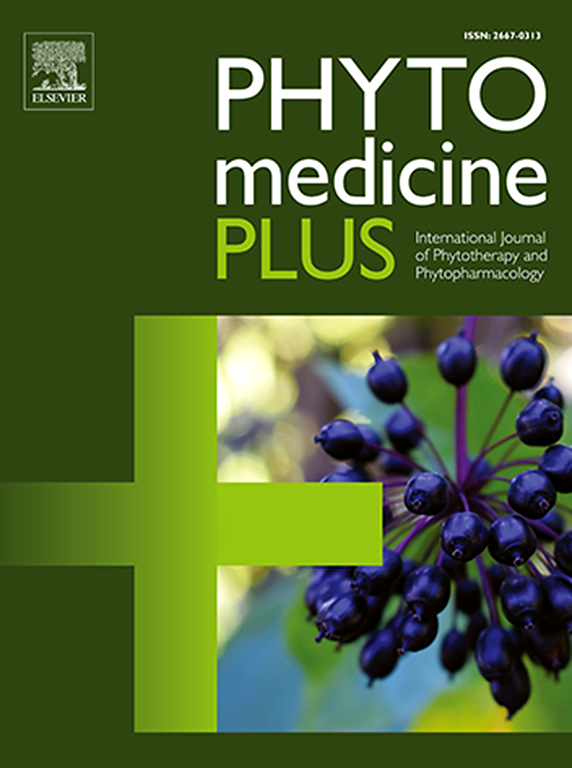Integrated bioinformatics and network pharmacology analysis to reveal the therapeutic targets and potential molecular mechanism of Traditional Chinese Medicine Lianhua-Qingwen capsule on children's influenza
Q3 Pharmacology, Toxicology and Pharmaceutics
引用次数: 0
Abstract
Background Influenza annually affects 5%-10% of adults and up to 20%-30% of children worldwide, with pediatric populations being more susceptible to severe complications and even mortality due to their immature immune systems. Traditional Chinese Medicine (TCM) demonstrates unique advantages in influenza treatment through multi-target mechanisms inhibiting viral replication and modulating host immunity. As a clinically prevalent TCM formulation for respiratory infections, the molecular mechanisms underlying Lianhua Qingwen Capsule's (LHQW) therapeutic effects against pediatric influenza remain elusive.
Purpose and methods This study focuses on children and combines network pharmacology, molecular docking, and pediatric influenza target data to reveal the molecular mechanism of LHQW therapy for influenza virus infection, breaking through the limitations of adult influenza mechanism research. Through integrating childhood influenza targets with LHQW active ingredients, a "disease drug" interaction network was constructed, and a "principal component-micro regulation" synergistic model of herbal formulas was established, providing a digital research paradigm for analyzing the compatibility principles of herbal formulas
Result Network pharmacology and molecular docking experiments have shown that LHQW mainly exerts therapeutic effects through the TNF and TLR4 signaling pathways. In vitro experiments have shown that LHQW has a significant inhibitory effect on the virus, with IC50 and TC50 values of 6.68 ± 1.03 μM and 9.97 ± 1.26 μM, respectively. In vivo experiments have confirmed that LHQW can improve the survival rate of mice, promote weight recovery, reduce viral titers, enhance antiviral antibody levels, and reduce lung index, inflammatory cytokine levels, and lung injury. Moreover, LHQW improves inflammation and oxidative stress by inhibiting the expression of TLR4 and MyD88, while reducing lung tissue cell apoptosis.
Conclusion Notably, we pioneer in elucidating LHQW's dual-target mechanism that concurrently disrupts viral lifecycles and modulates host factors, thereby opening new avenues for developing antiviral therapeutics.
结合生物信息学和网络药理学分析,揭示中药莲花清瘟胶囊治疗儿童流行性感冒的靶点和潜在分子机制
全世界每年有5%-10%的成年人和高达20%-30%的儿童感染流感,由于儿童免疫系统不成熟,他们更容易出现严重的并发症,甚至死亡。中医药通过多靶点机制抑制病毒复制和调节宿主免疫,在流感治疗中显示出独特的优势。连花清温胶囊作为一种临床常用的治疗呼吸道感染的中药制剂,其治疗小儿流感的分子机制尚不明确。目的与方法本研究以儿童为研究对象,结合网络药理学、分子对接、小儿流感靶点数据,揭示LHQW治疗流感病毒感染的分子机制,突破成人流感机制研究的局限。通过整合儿童流感靶点与LHQW有效成分,构建“病药”互作网络,建立中药方剂“主成分-微调控”协同模型,为分析中药方剂配伍原理提供数字化研究范式。结果网络药理学和分子对接实验表明,LHQW主要通过TNF和TLR4信号通路发挥治疗作用。体外实验表明,LHQW对病毒有明显的抑制作用,IC50和TC50值分别为6.68±1.03 μM和9.97±1.26 μM。体内实验证实,LHQW可提高小鼠存活率,促进体重恢复,降低病毒滴度,增强抗病毒抗体水平,降低肺指数,炎性细胞因子水平,减轻肺损伤。此外,LHQW通过抑制TLR4和MyD88的表达改善炎症和氧化应激,同时减少肺组织细胞凋亡。值得注意的是,我们率先阐明了LHQW同时破坏病毒生命周期和调节宿主因子的双靶点机制,从而为开发抗病毒治疗开辟了新的途径。
本文章由计算机程序翻译,如有差异,请以英文原文为准。
求助全文
约1分钟内获得全文
求助全文
来源期刊

Phytomedicine Plus
Medicine-Complementary and Alternative Medicine
CiteScore
3.70
自引率
0.00%
发文量
178
审稿时长
81 days
期刊介绍:
 求助内容:
求助内容: 应助结果提醒方式:
应助结果提醒方式:


